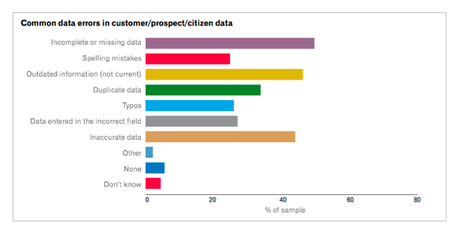 “Lies, damn lies, and statistics.” Although there is some argument about the original source of the quotation, there’s surely no doubt that the analysis of data shapes much of what we marketers do today—or at least it should. But the most important thing about big data (or data of any kind) is the thing most often overlooked—it’s not about the tools.
“Lies, damn lies, and statistics.” Although there is some argument about the original source of the quotation, there’s surely no doubt that the analysis of data shapes much of what we marketers do today—or at least it should. But the most important thing about big data (or data of any kind) is the thing most often overlooked—it’s not about the tools.
In today’s digital landscape we have the capability to capture data on every purchase, every search, every website visited, and even our movements on site. Automated tools are vital to collect, collate, store, and analyze this mass of information. To truly get the most out of big data though and deliver a spectacular experience in every instance to our customers, other factors, including the human touch, must come in to play in key areas of the data mining process. Let’s take a look.
Garbage in—Garbage out
Garbage in, garbage out. That’s never more true than when it comes to data. A big data strategy built on inaccurate, unclean, and/or disorganized information will deliver zero value. This graphic from a recent Experian report estimates that more than 90 percent of organizations report errors in their contact data.

This is a critical problem that can undermine the efforts of any organization looking to harness the power of data. Human error, poor internal communications, and an absence of effective data quality management are all contributory factors. The Experian report highlighted the fact that although many organizations are aware of the consequences of working with poor quality data, few are adopting strategies and systems to help to achieve better results. In my experience, this is either because marketers don’t really understand what value great data could potentially deliver for them (via email campaigns, lead generation efforts, serving up personalized experiences, etc.) and/or they don’t have the time or the resources to get their data where they need it to be. Note from the chart above that most report data is either inaccurate, incomplete, or outdated. That’s because we’re simply not paying attention. The opportunity to collect the right data is probably there, we’re just not taking advantage of it.
Focus on business needs and not just technology
An organization needs people who understand the business needs for data, as well as the technology that drives it. The danger with big data tools is that they can be deployed as a solution to a problem that maybe isn’t fully understood. A focus on the technology tactics, and not on the overall goals and needs of the business, could lead to insights being missed that could suggest a new angle or a new approach. Who is going to set the strategy, who will focus on the overall business strategy and react when the tech is going in the wrong direction?
That’s a question that my partner, Dan Newman, recently addressed when he took a look at the emerging role of the Chief Data Officer (CDO). This relatively new, but rapidly growing C-Suite role has risen to fill that gap that other executives, however talented in their own sphere of influence, may lack when it comes to getting the best out of big data tools. Here’s what an organization typically looks like:
- The CEO looks at the big picture, but has neither the time nor expertise to get into the finer details of data management.
- The CIO would appear to be the obvious custodian of big data, but may lack the business insight to get beyond the technology.
- The CMO has the digital marketing chops, but may lack the technical knowledge to understand how the tools can best be employed.
Hence, the CDO role to bridge the often-tortuous relationship between the marketing and IT functions. The CDO, as Dan pointed out, is well placed to take responsibility for developing a digital business strategy in support of their executive colleagues.
Understanding, analysis, and interpretation
Whomever it is that assumes responsibility for the strategy, they need support from people who have the skills to analyze and interpret results from the data. While the tools do the job of corralling the data, tools are rarely enough—humans are needed as part of this equation to make sense of the whole thing. These are the so-called data scientists, a relatively new role and one that was described at Harvard Business Review as “the sexiest job of the 21st Century” are in high demand – and that’s going nowhere but up.
The data scientist is effectively the conduit between the data tools and the decision makers, a role that can be described as the ability to interpret rich data sources, create data-based visualizations to help the information be more easily digested, understand how to manage and manipulate large amounts of data and then be able to coherently break down complex information into digestible, actionable insights. Sounds easy, doesn’t it?
So handling big data isn’t really at all about the tools but, instead, it’s about using them as a part of the process to arrive at the right decisions to meet the organization’s needs. Anyone who doubts that would do well to bear in mind the 10/90 rule put forward nearly 10 years ago by Google co-founder and digital evangelist Avinash Kaushik. He suggested that for every $10 invested in data analytics tools a business should invest $90 in people to actually extract value from the data. You might argue with the proportions, but what is inarguable is that however much data you might have, it’s of little value if you can’t make any sense of it.
Where do you stand on this one? Is it all about the tools for you and can they offer real insights without human analysis? I would love to hear your thoughts.
Graphics source Global Research Report
Other resources on this topic:
The Big Risks of Big Data Mining
Why A Data Scientist Should Be Your Next Marketing Hire
Photo Credit: documentmanagementsoft via Compfight cc

